In the fanzine world, Gary Groth is known for Fantastic Fanzine,
but don’t forget Word Balloons!
Word Balloons 1, March, 1974
Editor and Publisher: Gary Groth

Those of you that are old codgers like myself, or that follow this column (or both), know Gary Groth published the wonderful Fantastic Fanzine for 13 issues (plus two big special issues). What you might not know is that, after that run, he started an abbreviated publication called Word Balloons. Unfortunately, this publication lasted only one issue, explained by Groth:
This is a little hazy, but I think I put out a monthly newsletter after this that was distributed mostly locally to Washington, DC-area fans. But, later this year, my then-partner, Mike Catron, and I, started working on a rock ‘n’ roll convention that took place over the July 4th weekend of 1975, and which was supposed to make enough money to launch a publishing company. This would’ve taken all our free time between roughly September ’74 and July ’75
If you are a regular reader of Ink Stains, you also know that most of these fanzines we all love so much are usually stuffed with professional con sketches, commissions, and a plethora of fan produced art. Usually in reverse proportions are the articles, interviews, and fiction pieces. With this fanzine (Groth does contend in his editorial, though, that this is not a fanzine, but hopefully a “trade publication”) Groth heads in another direction. Groth talks about his reasoning behind this lack of art, saying, “It was probably a conscious decision not to use fan art, or (obviously) much art at all. I was mostly interested in the words: criticism, analysis, interviews. I’m sure I realized the fan art gave the ‘zine an amateurish look, so I went in the opposite direction — no art, even when it called for illustrations, such as in the Adams interview.”
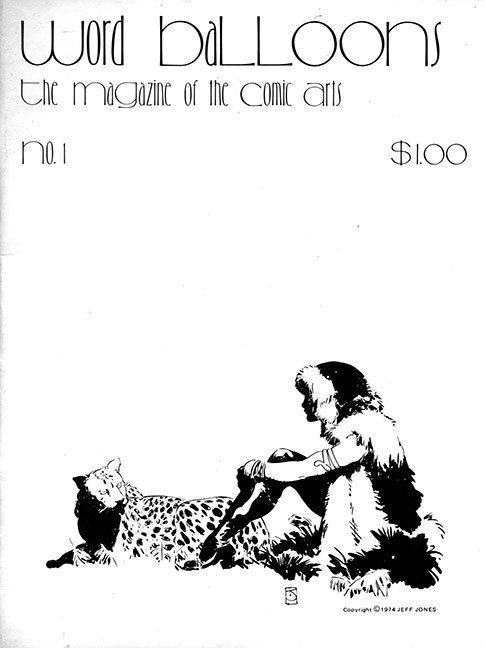
It’s evident from the cover itself that this is a different animal (no pun intended, considering the leopard on the cover) than Groth’s previous publications. Though Jeff Jones contributed to many fanzines, his elegant, controlled, and usually more adult themed illustrations were geared towards something other than the more juvenile superhero themed fan publications. Also, the generous use of white space denotes a more adult approach toward design in general. And it says it there right on the cover! This is the magazine of the comic arts.
Now, having said all that, it still feels like a fanzine to me, looks like a fanzine, smells like a fanzine…but does it really matter what we call it? Let’s just read the damn thing!
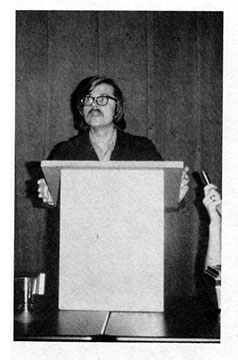 Following the editorial, Groth doubles down on the more adult nature of this collection with a review column dedicated to Underground Comics. However, immediately following this, as in many issues of Fantastic Fanzine, the convention reports start, complete with photos of various professionals attending. Initially, the keynote speech by the late Archie Goodwin (left) of the 1973 Metro Con in Maryland is presented by Mike Catron. The speech centers on an existing paper crisis at that time, driving up the cost of comics and other publications in general (a big factor contributing to the demise of those very same underground comics reviewed a few pages earlier), and hopefully causing a positive development of a more selective audience and a higher quality of comic content.
Following the editorial, Groth doubles down on the more adult nature of this collection with a review column dedicated to Underground Comics. However, immediately following this, as in many issues of Fantastic Fanzine, the convention reports start, complete with photos of various professionals attending. Initially, the keynote speech by the late Archie Goodwin (left) of the 1973 Metro Con in Maryland is presented by Mike Catron. The speech centers on an existing paper crisis at that time, driving up the cost of comics and other publications in general (a big factor contributing to the demise of those very same underground comics reviewed a few pages earlier), and hopefully causing a positive development of a more selective audience and a higher quality of comic content.
After lauding the then current efforts of people like Roy Thomas and Barry Smith on Conan, Len Wein and Berni Wrightson on Swamp Thing, and Denny O’Neil and Mike Kaluta on The Shadow, the speech ends poignantly with, “Any changes may be coming too little and too late. But if they are not, if even some of what I mentioned is possible, then I want to be around for it…and I want to be part of it.”
As for his part in the underground comic industry, Groth says he was “… dealing underground comix and a part of the Washington, DC fan scene, which was growing with a small convention at the University of Maryland (which I would attend as a journalism major in the 1974 school year beginning in September). I would note that half the content is made up of transcripts of panels and talks from Metro Con 1973, which I staged in Washington, DC the previous year, including the very contentious and proto-TCJ-esque Writers Panel. Marty Pasko, who did the Adams interview (quite smartly) was a pal. So, I didn’t dig too deeply for the editorial content!”
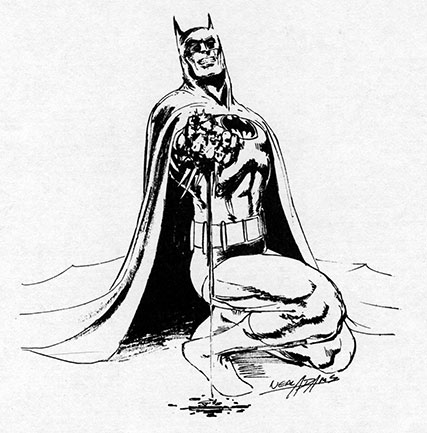 In that opening speech, Goodwin humorously made reference to the fact of his terminal lateness on actual editorial assignments, and he lumped Neal Adams in with him as one of those creatives who have a problem with deadlines. So, what follows next? That’s right, a Neal Adams interview, conducted by fan stalwart and later professional Martin Pasko. Much of the interview concentrates on the particulars that make a comic book a comic book, not a series of illustrations with text, and how Neal himself handles those particulars. How Neal does that job is delved into with great detail over a span of four and half pages. Various stories Adams had a part in are covered, along with other creatives’ work, and points made in interviews with other professionals. One interesting point from Pasko posits that, “Isn’t it really not the illustrator who’s giving dimension to the story, but very often the writer who’s giving further dimension to the art?” Reference is given of a Denny O’Neil Green Lantern/Green Arrow story of a sequence in which Adams felt he didn’t have to illustrate everything O’Neil described, because he had described it so well. Later in this issue of Word Balloons, a panel featuring O’Neil, along with Ted White and Len Wein, the Writers of the Comics, from the Metro Con of 1971, is transcribed by Groth, as well as a keynote speech by O’Neil from Metro Con 2 (I assume the year would be 1972). However, since I am an artist, I can’t not show the full page of beautiful and emotive roughs from Adams below!
In that opening speech, Goodwin humorously made reference to the fact of his terminal lateness on actual editorial assignments, and he lumped Neal Adams in with him as one of those creatives who have a problem with deadlines. So, what follows next? That’s right, a Neal Adams interview, conducted by fan stalwart and later professional Martin Pasko. Much of the interview concentrates on the particulars that make a comic book a comic book, not a series of illustrations with text, and how Neal himself handles those particulars. How Neal does that job is delved into with great detail over a span of four and half pages. Various stories Adams had a part in are covered, along with other creatives’ work, and points made in interviews with other professionals. One interesting point from Pasko posits that, “Isn’t it really not the illustrator who’s giving dimension to the story, but very often the writer who’s giving further dimension to the art?” Reference is given of a Denny O’Neil Green Lantern/Green Arrow story of a sequence in which Adams felt he didn’t have to illustrate everything O’Neil described, because he had described it so well. Later in this issue of Word Balloons, a panel featuring O’Neil, along with Ted White and Len Wein, the Writers of the Comics, from the Metro Con of 1971, is transcribed by Groth, as well as a keynote speech by O’Neil from Metro Con 2 (I assume the year would be 1972). However, since I am an artist, I can’t not show the full page of beautiful and emotive roughs from Adams below!
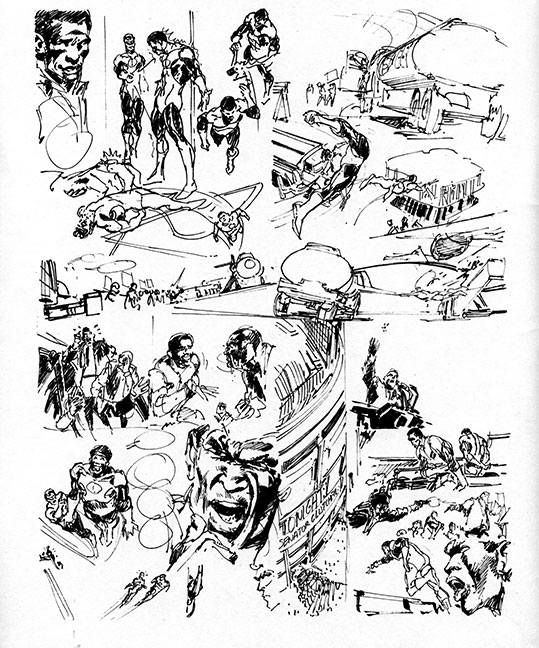
Following the Adams interview is a portfolio by one Donald Wong. Before this portfolio, Wong did mostly humorous illustrations (in Fantastic Fanzine, for example). However, it is made mention that, with this portfolio, Wong has started a new direction in art. A very calligraphic line quality is evident in this work, and an interesting combination of western and Asian stylistic elements. See below for yourself.
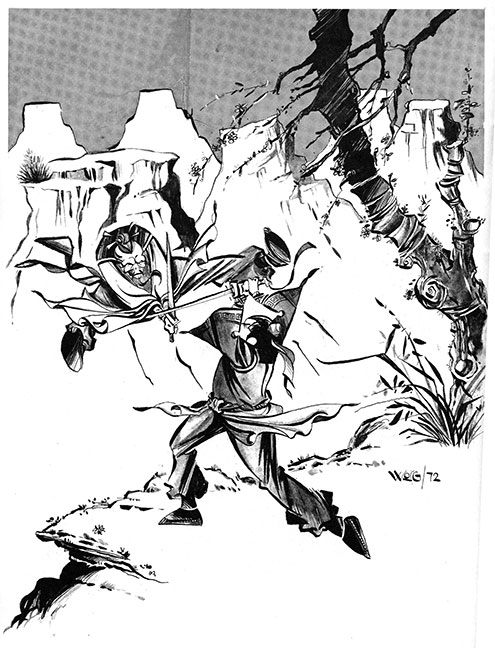
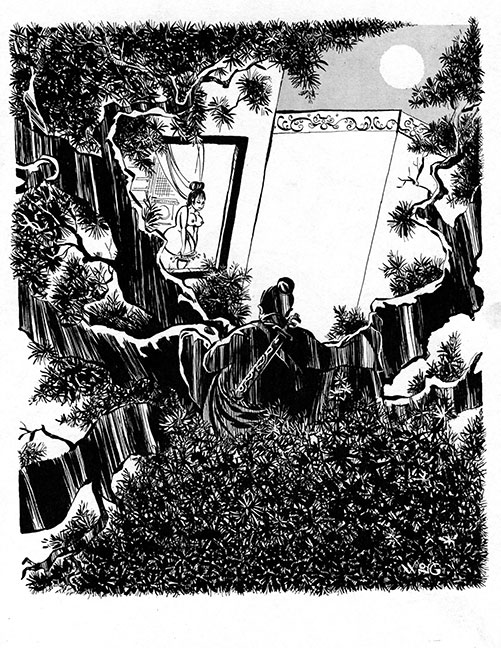

After a letters column, two fan favorites follow with full page illustrations, evoking all those Fantastic Fanzines of the past. First is Jim Hanley, utilizing a cavalcade of heroes to show the basic battle between good and evil. Hanley so effectively shows how these simple drawings can convey such emotion, even in his cartoony and retro style. Lastly, our eyes are greeted by the familiar and always beautiful work of Dave Cockrum. A new professional by this year of 1971, Cockrum shows off his command of the female figure, in this case, Edgar Rice Burroughs’ Thuvia, Maid of Mars.
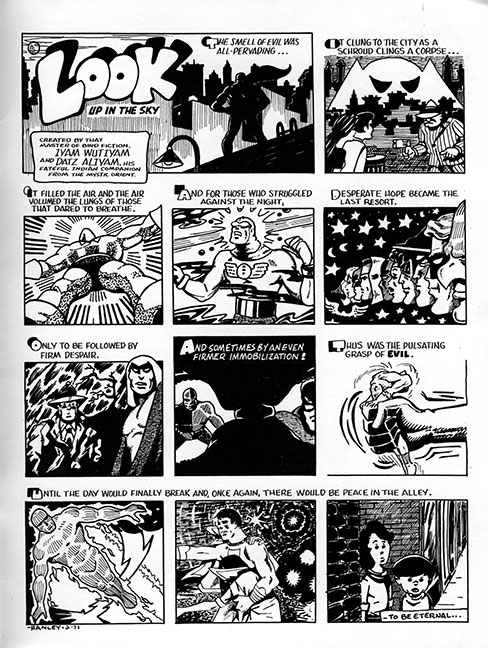
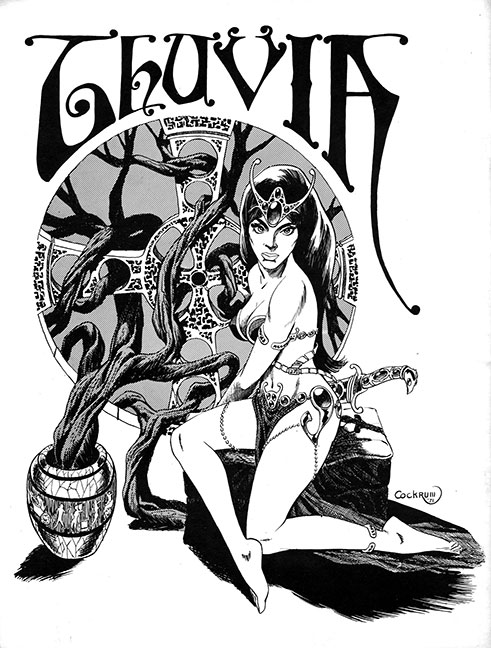
Groth would of course go on to helm, arguably,the best comic publication ever seen, The Comics Journal. Word Balloons was a step of sorts between Fantastic Fanzine and the Journal, as Groth elaborates on below via email:
It’s definitely a bridge. It’s basically just another piece in the continuity of improving my skills as an editor and designer. I thought I’d done this at RIT in my first year of college (72-73), but the indicia proves me wrong: March 1974, which means I was 19 years old. I must’ve moved back to the Washington, DC area by then, having worked for Jim Steranko for three months the previous year in Reading, PA, and wanted to do something more mature and intelligent than Fantastic Fanzine. I was in-between colleges at the time —RIT and the University of Maryland— and attending a community college. And generally taking comics more seriously.
You can see the entirety of Word Balloons by downloading the pdf here, of course. Thanks this time go out to the ever generous Aaron Caplan, who loaned me this fanzine, as well as several others you will see in upcoming columns (such as Alan Light’s All Dynamic, Alter Ego, George Breo’s Chronicle, Comic Crusader, and Kenneth Smith’s Phantasmagoria). Thanks also to Gary Groth for answering a few questions via email.
Please comment, I can always use the feedback!
Ken Meyer Jr.
kenmeyerjr@yahoo.com



Great publication with interesting articles ; thanks a lot for sharing it !
Delighted to see this one! It is really interesting to see Groth’s earlier efforts. Thanks!
Ah, so good to see some comments, thanks, guys!
Thanks for this…I’m looking for this issue to purchase, and this is not only helpful, it reaffirms my commitment to find it!